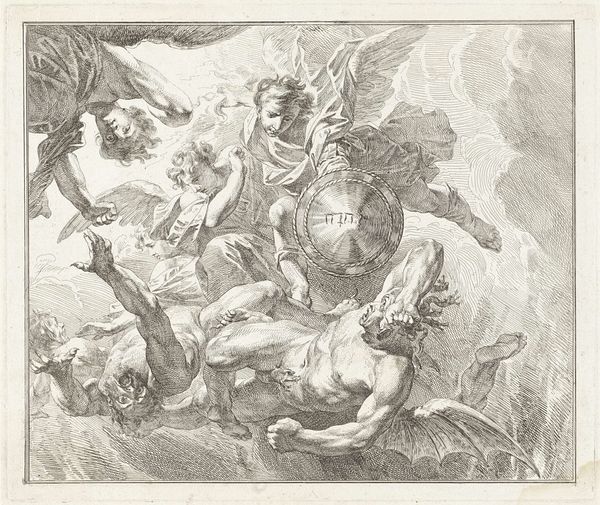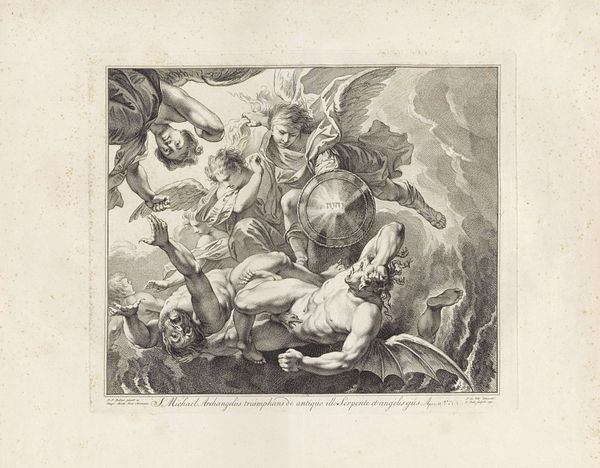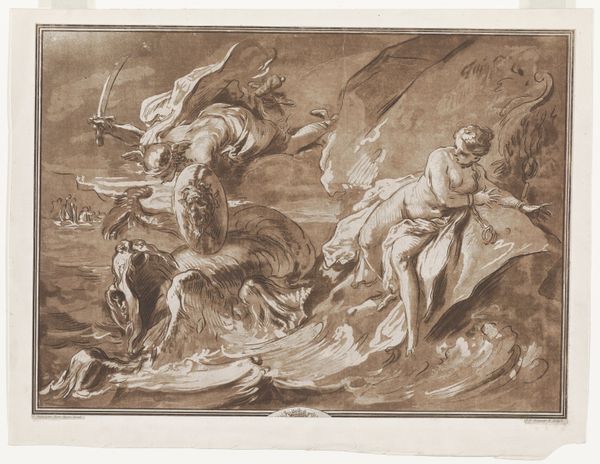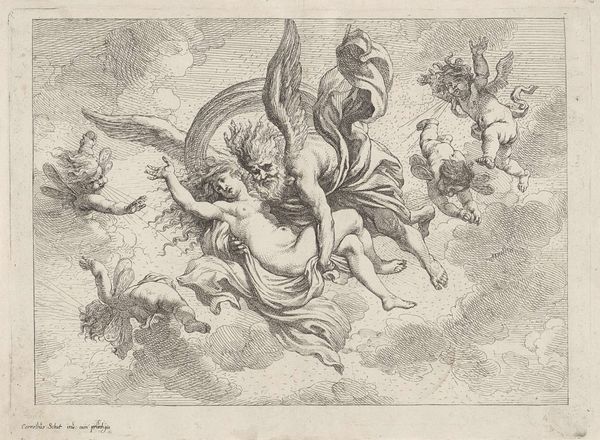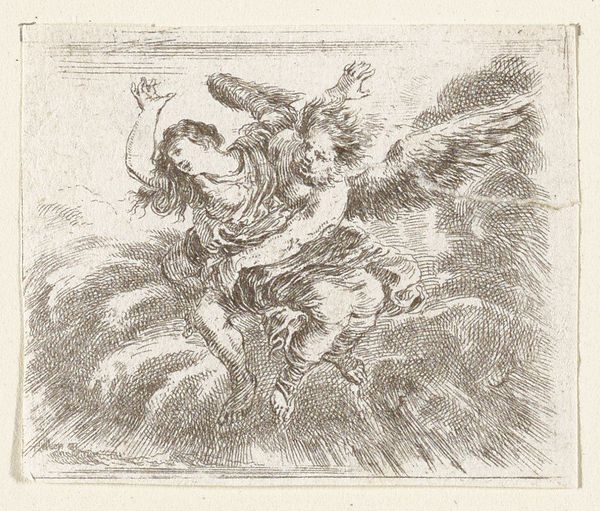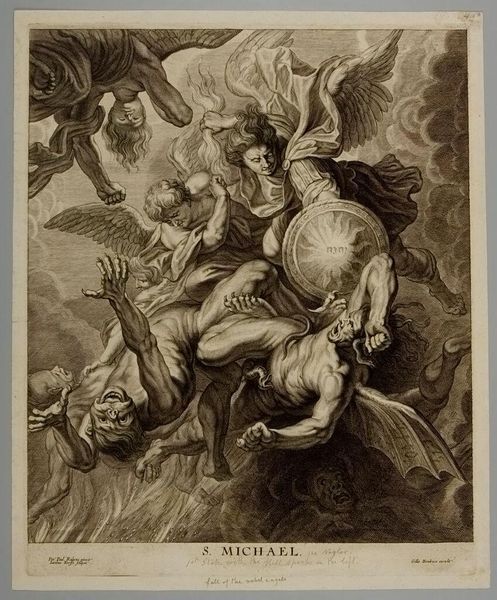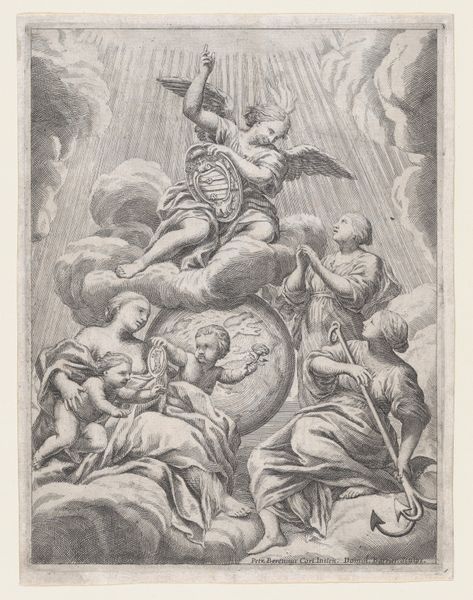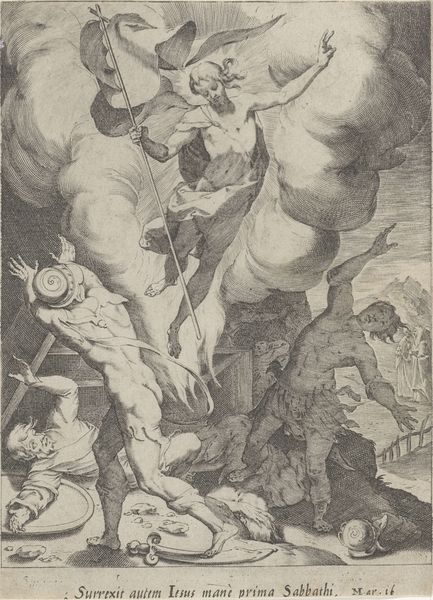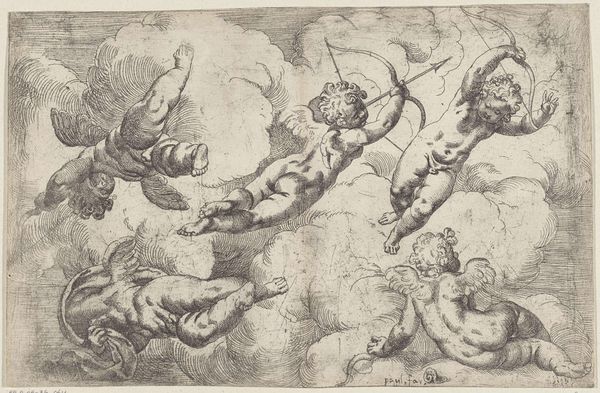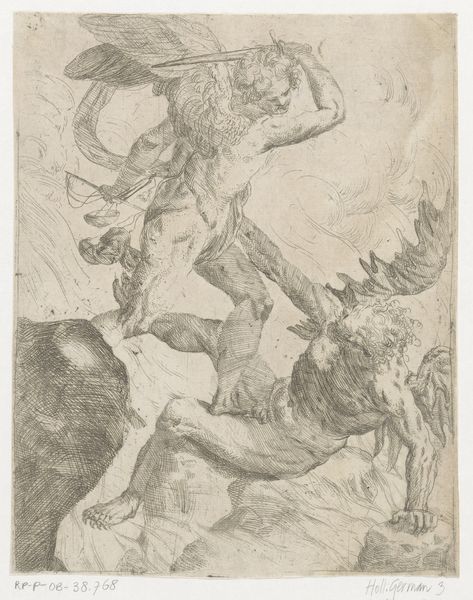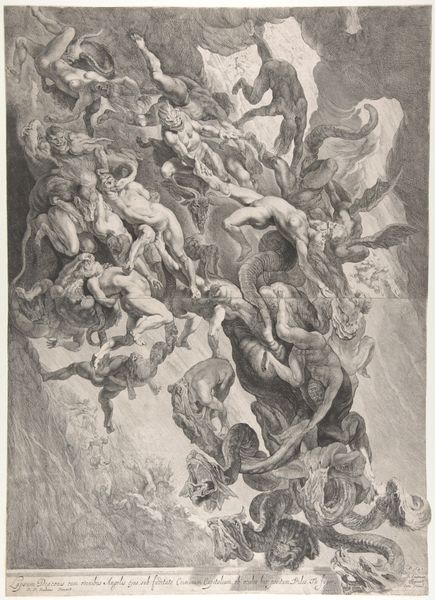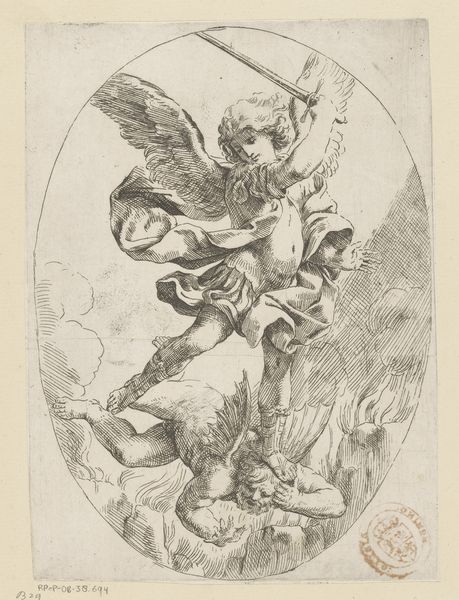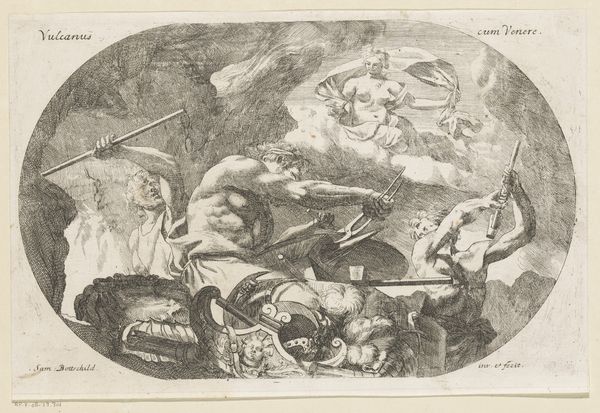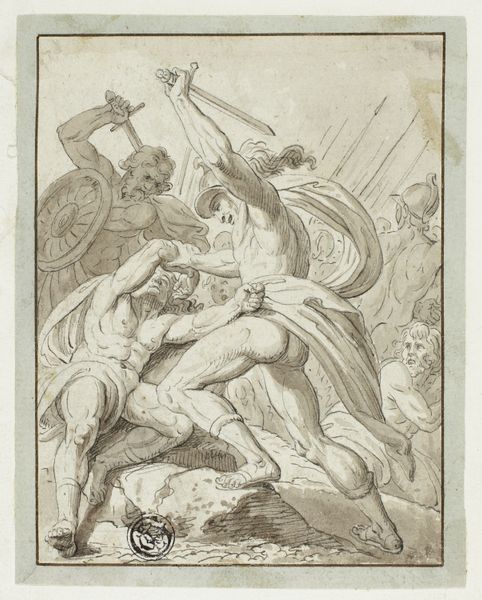
Dimensions: height 333 mm, width 395 mm
Copyright: Rijks Museum: Open Domain
Curator: Here we have "Michael Subduing the Devil," an engraving in ink by Roelof van der Meulen from 1824. What strikes you about it? Editor: It's a flurry of bodies! Angels tumbling from the heavens, demons contorting in defeat… The texture created through the engraving process is captivating; it's almost dizzying. Curator: Consider the historical and religious context. This image reinforces a rigid dichotomy: Michael, the divine warrior, standing for God’s law, and the Devil embodying rebellion. What narrative does the artist intend to perpetuate, and what are its consequences for contemporary viewers engaging with its message today? Editor: Looking at the material execution, the dense lines work almost sculpturally, giving a tactile quality despite it being an engraving. Think about the labour involved in creating this complex scene with such precision, the economic and social system that supported this creation, and even who could access this type of artwork during the 19th century. Curator: It reinforces societal power structures, right? It privileges the celestial, male figure and reinforces traditional hierarchies. Are there subversive readings to be found? I mean, look at the expressions; it's almost theatrical! Editor: Definitely, there's a deliberate drama created through the line work itself; this process transforms simple materials like ink and paper into a visually and emotionally charged statement about belief systems and production processes. Curator: Agreed. But how does the presentation of "evil" as something external impact the viewer’s self-perception and ability to contend with evil within themselves? This engraving might reflect a time of shifting moral and social codes, a moment ripe for challenging traditional interpretations of right and wrong, which can be observed when critically interpreting 19th century artworks. Editor: Exactly! Consider the dissemination of such imagery, and its impact, the accessibility based on class and societal hierarchy during that time, the resources utilized in creation, how its perception transforms from then till now... All these components matter when assessing van der Meulen's artistic intention, both back then and our experience in viewing it in modern day. Curator: I hadn’t thought of it in those terms exactly. Now that you mention the means of production... it encourages new avenues for thought! Editor: Agreed. Seeing it through this new, historically-driven lens really highlights the power it has to shape cultural beliefs, both during and after its inception.
Comments
No comments
Be the first to comment and join the conversation on the ultimate creative platform.
